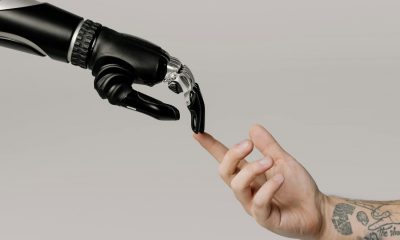

Technology
Kaja Kallas says Ukraine is giving the free world a masterclass on cyber-defense – Crypto News
Eight months later, Russia began its full-scale invasion of Ukraine and violated every rule in the book. For years, we had heard predictions that the next big war would be a kind of cyber-Armageddon. But instead, Russia brought back large-scale conventional war. Images of destruction from places like Bucha, where the Russian occupiers tortured and killed civilians, shocked the world.
Much of the free world’s response has inevitably focused on conventional warfare, and rightly so. The aggressor must be defeated on the battlefield, and for that Ukraine needs military support. But Russia is also waging an energy war, an information war and a cyberwar. Democracies need to take steps to defend themselves in all these areas, as well as holding the line to defend a world where rules still apply, and where technology works for, not against, democratic societies. In this regard, there are four things of which we need to take note, and four things all free nations must do.
First, we need to understand that integrating cyber-warfare into regular warfare is now established practice. An hour before Russian tanks rolled over Ukraine’s border, Russia disrupted Ukraine’s access to Viasat communication satellites. The aim was to leave the Ukrainian armed forces without one of their communications lines, as well as having a broader spill-over effect on broadband services that, for instance, control the remote monitoring of wind turbines in Germany. Russia has also targeted communications and IT infrastructure such as data centers and wireless masts in the same way it has targeted energy infrastructure.
Second, having a well-protected digital infrastructure is crucial. Ukraine’s digital backbone has enabled the state to keep delivering services online during the war. Many Russian cyber-attacks have failed because Ukraine had spent years building up cyber-resilience, with help from Estonia and others, and has now had extensive wartime assistance. And now it has lessons to teach us. Using apps such as Diia, the Ukrainian government has shown how technology can help taxes to be paid, public services to remain available and data to be kept secure even during war. Such technology also allows Ukraine to continue providing services for the millions of refugees spread across Europe or trapped under Russian occupation. Estonia is already working with Ukrainian partners to adapt Diia for our own citizens.
Third, there is still a sense that bad actors can do what they want in cyberspace. While there have been significant examples in recent years of major cyber-attacks being attributed to foreign governments, this has not necessarily led to a change in behaviour. The complexity of ascertaining who is behind attacks and following up with real consequences still makes some actors see cyber-warfare as an attractive tool. Russia continues to use so-called “DDoS diplomacy”—bombarding websites with traffic to send political signals and to try to disrupt services beyond Ukraine. Nearly every week, Estonia experiences cyber-attacks on government and private services. The effects have been minimal, because we are well prepared and the attackers are not sophisticated. But a bigger threat lies elsewhere: malicious state-sponsored cyber groups are becoming more active across the world and sometimes gang up with ransomware groups.
Finally, the private sector has transformed its role during this war, and taken public-private partnership up a level in defense of digital infrastructure. Though social-media platforms are not doing enough to prevent the spread of disinformation, companies like Palo Alto Networks and Amazon Web Services have provided much-needed services and security measures for Ukrainians to defend their critical infrastructure and government services. Co-operation with companies like Microsoft, cyber-security specialists Mandiant and others has also been crucial.
In light of all this, what should democratic nations do? First, we must all be prepared for cyber-warfare to continue even after the conventional war ends, and to invest appropriately. The security environment has changed, and we all must adapt. As highly digitalised societies, we need to make sure that public services remain available and data are kept secure. To that end, last year Estonia nearly doubled its annual cyber-security budget. There is also a need for swift information exchange between like-minded countries and service providers to help prevent attacks in the future.
Second, we must step up our efforts in cyber capacity-building. Closing the digital divide must go hand in hand with building up cyber-resilience. Estonia has long shared its know-how. A recent example is helping to set up a new cyber competence center for Latin America and the Caribbean in the Dominican Republic, called LAC4, which acts as a regional hub for cyber-security education and training. We have also been helping countries in Africa, Central Asia and Eastern Europe build more robust cyber-defenses.
Third, we must ensure accountability, including in cyberspace. Russia’s strategic goals are much bigger than Ukraine’s. It wants to recast the world in its own image, where might makes right. The digital sphere is not a sideshow but the front line. In March, Russia put forward a draft for a new cyber treaty at the UN. It aims to undermine states’ obligations under existing international law and to justify domestic censorship. But existing international law applies fully in cyberspace. The international community risks sleepwalking into negotiating new, legally binding international rules with a war criminal.
Finally, we must build connections beyond current institutional limitations. It is clear that security for liberal democracies can no longer happen in silos. We must set standards with those we can trust, especially as new technologies like artificial intelligence, 5G and quantum computing become realities. Governments must better link with counterparts in other countries, as well as building partnerships with businesses and civil society.
Tyrannies like Russia will keep trying to turn technology into a tool of oppression and a means to destabilize free societies. Our job is to prevent that, to help Ukraine win the war and to build solid alliances. We must ensure impunity does not prevail in any sphere, and cyberspace is no exception.
Kaja Kallas is the prime minister of Estonia. This article is adapted from a speech given to a closed audience in Sydney on April 5th.
© 2023, The Economist Newspaper Limited. All rights reserved. From The Economist, published under license. The original content can be found on www.economist.com
Catch all the technology news and Updates on Live Mint. Download Mint News App to get Daily market update Live business news,
Updated: 05 Jul 2023, 12:58 PM IST
-

 Technology1 week ago
Technology1 week agoChip Designer Arm Plans to Become Chip Manufacturer – Crypto News
-

 Cryptocurrency3 days ago
Cryptocurrency3 days agoSUI eyes 24% rally as bullish price action gains strength – Crypto News
-
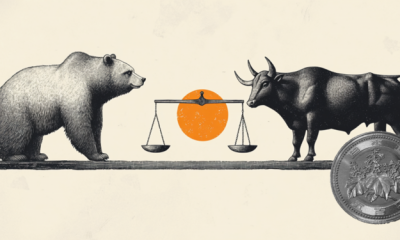
 others6 days ago
others6 days agoJapanese Yen remains depressed amid modest USD strength; downside seems limited – Crypto News
-

 Technology1 week ago
Technology1 week agoMacBook Air M3 15-inch model gets a ₹12,000 price drop on Amazon: Deal explained – Crypto News
-

 Cryptocurrency2 days ago
Cryptocurrency2 days agoCoinbase scores major win as SEC set to drop lawsuit – Crypto News
-
others1 week ago
Japan Foreign Investment in Japan Stocks declined to ¥-384.4B in February 7 from previous ¥-315.2B – Crypto News
-
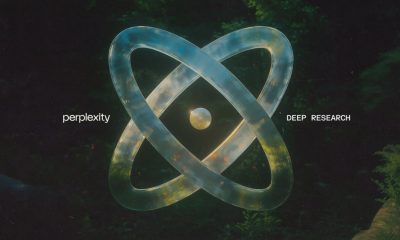
 Technology1 week ago
Technology1 week agoPerplexity takes on ChatGPT and Gemini with new Deep Research AI that completes most tasks in under 3 minutes – Crypto News
-

 Technology1 week ago
Technology1 week agoLava Pro Watch X with 1.44-inch AMOLED display, in-built GPS launched in India at ₹4,499 – Crypto News
-

 Blockchain6 days ago
Blockchain6 days agoXRP Set To Outshine Gold? Analyst Predicts 1,000% Surge – Crypto News
-

 Cryptocurrency1 week ago
Cryptocurrency1 week agoAdvisers on crypto: Takeaways from another survey – Crypto News
-

 others1 week ago
others1 week agoRemains subdued below 1.4200 near falling wedge’s lower threshold – Crypto News
-

 Cryptocurrency1 week ago
Cryptocurrency1 week ago0xLoky Introduces AI-powered Intel for Crypto Data & On-chain Insights – Crypto News
-

 Technology1 week ago
Technology1 week agoFactbox-China’s AI firms take spotlight with deals, low-cost models – Crypto News
-

 Technology1 week ago
Technology1 week agoMassive price drops on Samsung Galaxy devices: Up to ₹10000 discount on Watch Ultra, Tab S10 Plus, and more – Crypto News
-

 Cryptocurrency1 week ago
Cryptocurrency1 week agoTether Acquires a Minority Stake in Italian Football Giant Juventus – Crypto News
-

 Blockchain1 week ago
Blockchain1 week agoXRP To 3 Digits? The ‘Signs’ That Could Confirm It, Basketball Analyst Says – Crypto News
-

 others1 week ago
others1 week agoAustralian Dollar jumps to highs since December on USD weakness – Crypto News
-
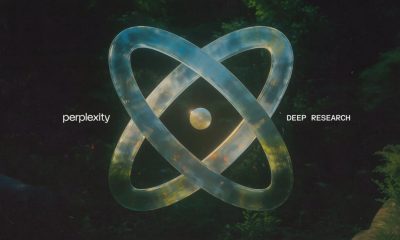
 Technology1 week ago
Technology1 week agoWeekly Tech Recap: JioHotstar launched, Sam Altman vs Elon Musk feud intensifies, Perplexity takes on ChatGPT and more – Crypto News
-
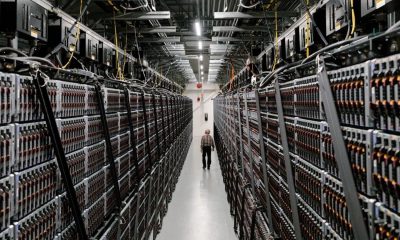
 Technology1 week ago
Technology1 week agoWhat will it take for India to become a global data centre hub? – Crypto News
-
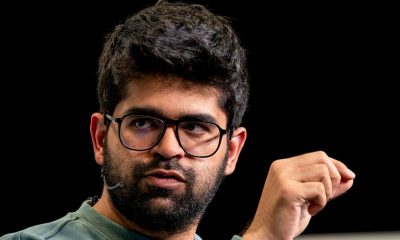
 Technology1 week ago
Technology1 week agoChatGPT vs Perplexity: Sam Altman praises Aravind Srinivas’ Deep Research AI; ‘Proud of you’ – Crypto News
-

 Blockchain1 week ago
Blockchain1 week agoNEAR Breaks Below Parallel Channel: Key Levels To Watch – Crypto News
-

 Blockchain7 days ago
Blockchain7 days agoWill BTC Rebound Or Drop To $76,000? – Crypto News
-

 Blockchain7 days ago
Blockchain7 days agoXRP Price Settles After Gains—Is a Fresh Upside Move Coming? – Crypto News
-

 Metaverse6 days ago
Metaverse6 days agoHow AI will divide the best from the rest – Crypto News
-

 Business6 days ago
Business6 days agoWhat Will be KAITO Price At Launch? – Crypto News
-

 Business6 days ago
Business6 days agoElon Musk’s DOGE Launches Probe into US SEC, Ripple Lawsuit To End? – Crypto News
-

 Blockchain6 days ago
Blockchain6 days agoXRP Price Pulls Back From Highs—Are Bulls Still in Control? – Crypto News
-

 Business5 days ago
Business5 days agoWhales Move From Shiba Inu to FXGuys – Here’s Why – Crypto News
-

 Technology1 week ago
Technology1 week agoBest phones under ₹20,000 in February 2025: Poco X7, Motorola Edge 50 Neo and more – Crypto News
-

 Blockchain1 week ago
Blockchain1 week agoPopular Investor Says Memecoin More Superior With ‘World’s Best Chart’ – Crypto News
-

 Cryptocurrency1 week ago
Cryptocurrency1 week agoWho is Satoshi Nakamoto, The Creator of Bitcoin? – Crypto News
-

 Technology1 week ago
Technology1 week agoGrok 3 is coming! Elon Musk announces launch date, promises ‘smartest AI on Earth’ – Crypto News
-
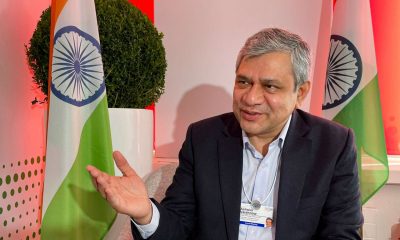
 Technology7 days ago
Technology7 days agoUnion Minister Ashwini Vaishnaw to launch India AI Mission portal soon, 10 companies set to provide 14,000 GPUs – Crypto News
-

 others6 days ago
others6 days agoForex Today: What if the RBA…? – Crypto News
-

 Cryptocurrency5 days ago
Cryptocurrency5 days agoHayden Davis crypto scandal deepens as LIBRA memecoin faces fraud allegations – Crypto News
-

 Technology5 days ago
Technology5 days agoLuminious inverters for your home to never see darkness again – Crypto News
-

 Technology3 days ago
Technology3 days agoStellantis Debuts System to Handle ‘Routine Driving Tasks’ – Crypto News
-

 Metaverse1 week ago
Metaverse1 week agoStrange Love: why people are falling for their AI companions – Crypto News
-

 Cryptocurrency1 week ago
Cryptocurrency1 week agoYap-to-earn takes over Twitter – Blockworks – Crypto News
-

 Technology1 week ago
Technology1 week agoCyber fraud alert: Doctor duped of ₹15.50 lakh via fake trading app; here’s what happened – Crypto News
-

 Cryptocurrency1 week ago
Cryptocurrency1 week agoCrypto narratives as we await next market move – Crypto News
-
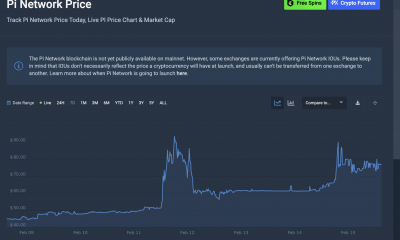
 Business1 week ago
Business1 week agoHow Will It Affect Pi Coin Price? – Crypto News
-

 Cryptocurrency1 week ago
Cryptocurrency1 week agoGameStop Stock Price Pumps After Report of Bitcoin Buying Plans – Crypto News
-

 Blockchain1 week ago
Blockchain1 week agoXRP Bullish Pennant Targets $15-$17 But Confirmation Is Required – Crypto News
-

 Business6 days ago
Business6 days agoThese 3 Altcoins Will Help You Capitalize on Stellar’s Recent DIp – Crypto News
-

 Business6 days ago
Business6 days agoWhy Ethereum (ETH) Price Revival Could Start Soon After Solana Mess? – Crypto News
-

 Business6 days ago
Business6 days agoMarket Veteran Predicts XRP Price If Ripple Completes Cup and Handle Pattern – Crypto News
-

 Cryptocurrency6 days ago
Cryptocurrency6 days agoBitcoin Sees $430M in Outflows as Market Responds to Fed’s Hawkish Stance – Crypto News
-

 Technology1 week ago
Technology1 week agoJioHotstar streaming platform launched, merging content from JioCinema and Disney+ Hotstar – Crypto News
-

 Technology1 week ago
Technology1 week agoFormer Google CEO warns of ‘Bin Laden scenario’ for AI: ‘They could misuse it and do real harm’ – Crypto News









